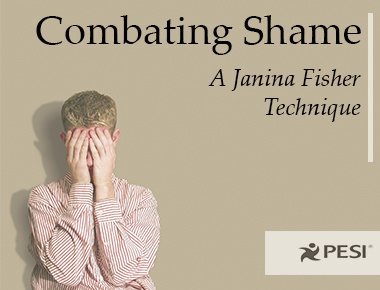Stop Reinforcing Shame with this Body Posture

Why does shame ‘stick like glue’ for decades after the trauma?
Shame can be harder to shake than fear because we attach meaning to shame. Our bodies use shame as a survival response by keeping us from acting in ways that would alienate us from others or get us exiled from the group.
Shame can be harder to shake than fear because we attach meaning to shame. Our bodies use shame as a survival response by keeping us from acting in ways that would alienate us from others or get us exiled from the group.
But in the process, it can also evoke other powerful feelings and responses, such as:
How can you help your patients break these automatic shame responses?
One way to do this is by combating shame through the body. Watch as Janina Fisher, Ph.D., shows you how to stop reinforcing shame with body posture.
- Feeling shame about experiencing physical responses, which creates a 'vicious circle' of shame
- Judging ourselves for these experiences, asking, "What does this say about me?"
- Reinforcing other trauma-related schemas such as, "It's not safe to succeed...to be self-assertive...to have needs...to be happy."
How can you help your patients break these automatic shame responses?
One way to do this is by combating shame through the body. Watch as Janina Fisher, Ph.D., shows you how to stop reinforcing shame with body posture.
Are you ready to become a Certified Complex Trauma Treatment Professional?
Don't miss our that will help you master neurobiologically informed treatments to heal trauma, save marriages and families, and help clients take back their lives. Learn more about how you can .
Topic: Trauma
Tags: Shame


